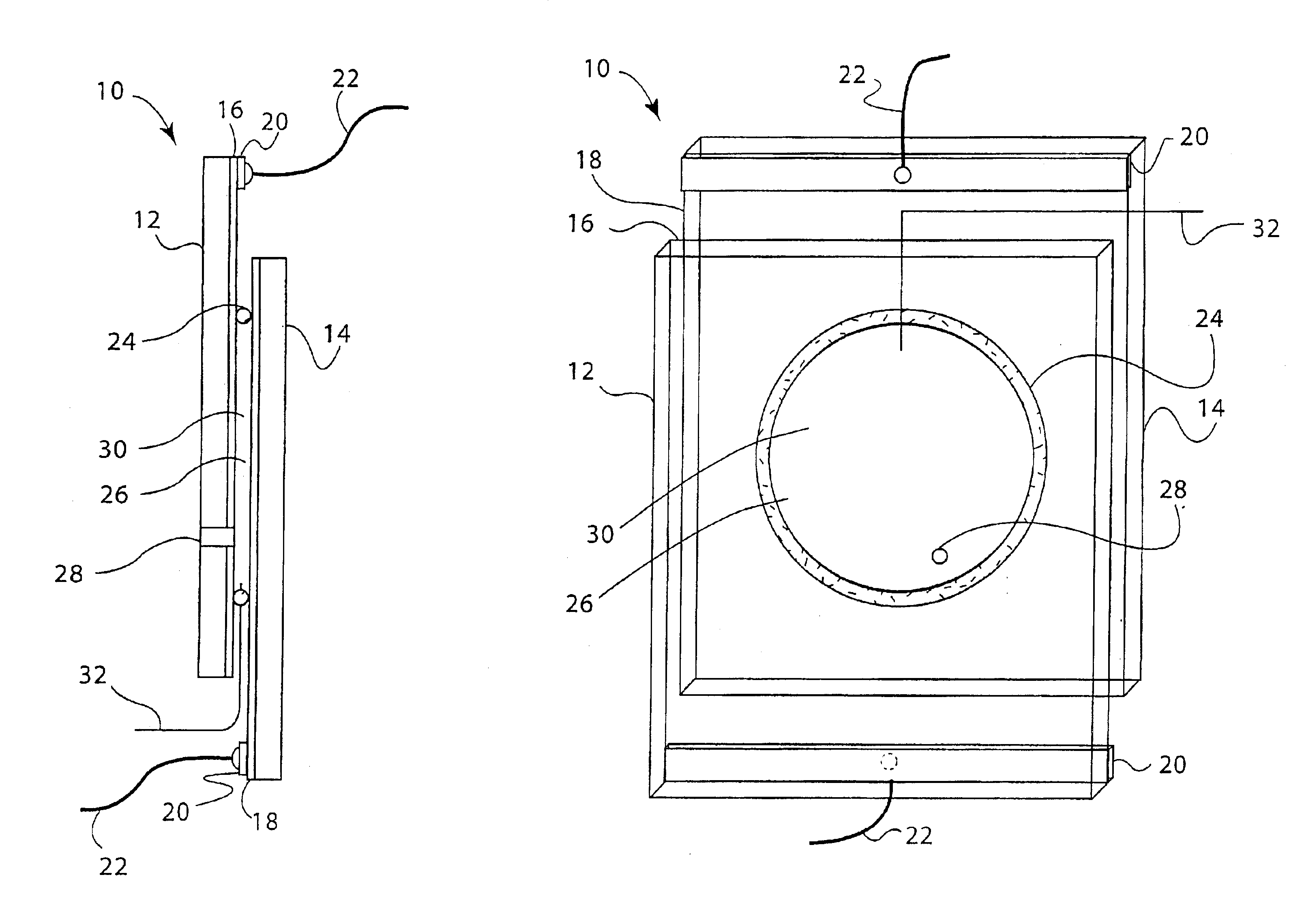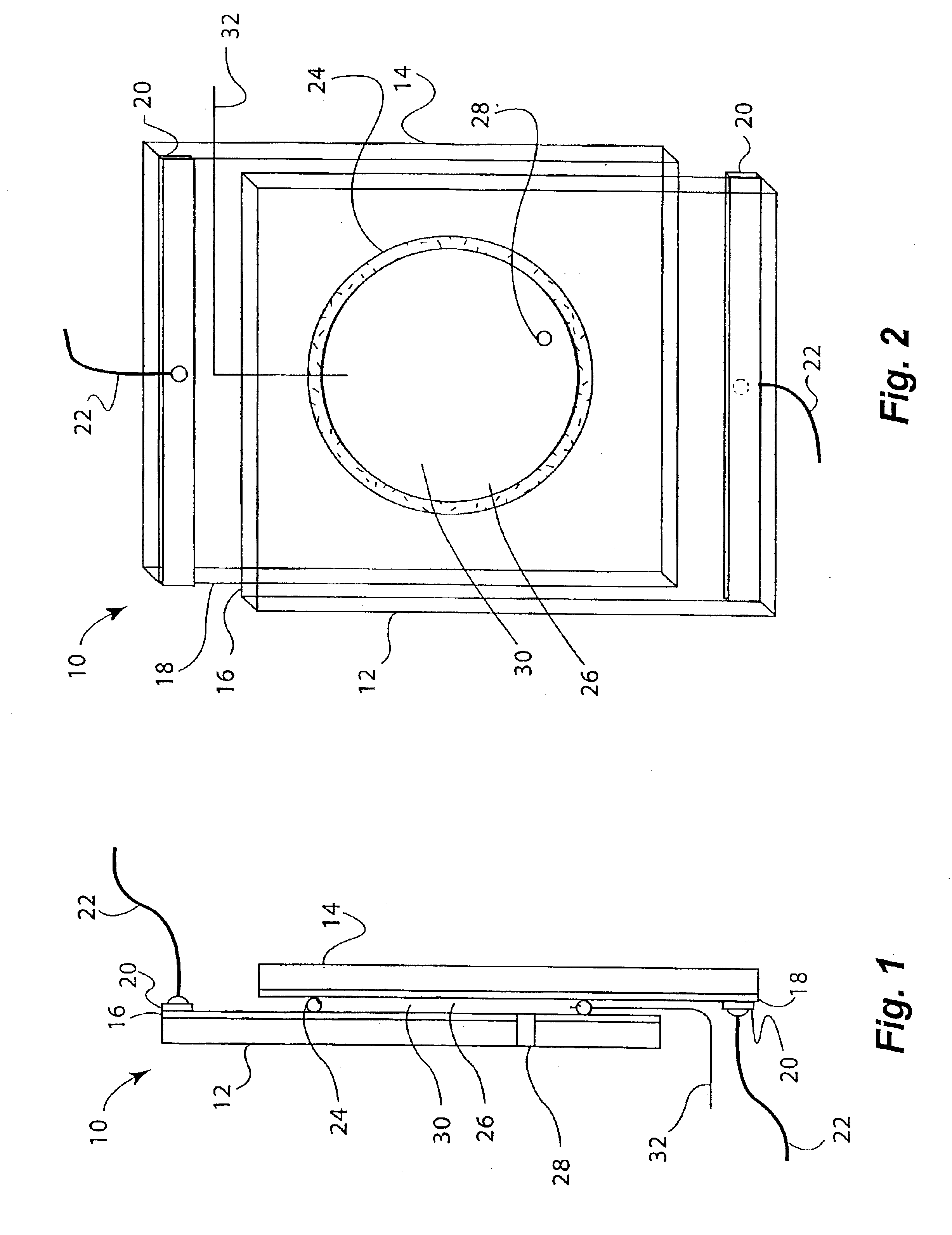Reversible electro-optic device employing aprotic molten salts and method
- Summary
- Abstract
- Description
- Claims
- Application Information
AI Technical Summary
Benefits of technology
Problems solved by technology
Method used
Image
Examples
example 1
An embodiment of a reversible mirror of the invention was fabricated as follows: two electrodes were prepared using 6×8 cm single-side planar ITO coated glass plates having a sheet resistivity of 7Ω / square. Each plate was provided with a bus bar by attaching a copper electrical contact approximately 1 cm wide along the entire edge of the 6 cm end of each plate. The electrodes were then washed with water, methanol and acetone, and dried in a stream of warm air to remove any dust or grease.
An o-ring (2 cm internal diameter (ID) vycor rubber donut-shaped o-ring, 0.3 cm thick) was used as a gasket to seal one electrode to the other. A silver wire (5 cm long, 0.25 mm diameter, 99.9% metal purity) was inserted through the o-ring by first piercing a hollow needle through the o-ring, placing one end of the silver wire through the hollow needle, and then withdrawing the hollow needle from the o-ring. Approximately 0.4 mm of the silver wire protruded through the o-ring. The o-ring was then pl...
example 2
A second working embodiment of a reversible mirror of the invention was fabricated using the general procedure provided in EXAMPLE 1 but with a solution of 3-butyl-1-methylimadazolium bis(trifluoromethylsulfonyl)imide (also containing less than 1 ppm water) and 0.792 mol / L of iron (II) is(trifluoromethylsulfonyl)imide. An iron mirror was deposited at a potential of −1.2 Volts versus the silver reference electrode. Twenty minutes after the potential was removed, the iron mirror deplated spontaneously. Overall, this reversible mirror device exhibited good optical reflectance in the reflective state and good transparency in the non-mirrored state, and was switched repetitively between these two states without degradation of performance.
example 3
A third working embodiment of a reversible mirror of the invention was fabricated using the general procedure provided in EXAMPLE 1 but with a solution of solution of 3-butyl-1-methylimadazolium bis(trifluoromethylsulfonyl)imide containing less than 1 ppm water and 0.073 mol / L ferrocene was used. By contrast to EXAMPLE 2, the iron is initially present as ferrocene. An iron mirror was initially deposited at a potential of −1.5 Volts versus the silver reference electrode. This iron mirror was deplated at a potential of +0.4 Volts versus the silver reference electrode and redeposited at a potential of −1.2 Volts versus the silver reference electrode. Overall, this reversible mirror device exhibited good optical reflectance in the reflective state and good transparency in the non-mirrored state, and was switched repetitively between these two states without degradation of performance.
PUM
 Login to View More
Login to View More Abstract
Description
Claims
Application Information
 Login to View More
Login to View More - R&D
- Intellectual Property
- Life Sciences
- Materials
- Tech Scout
- Unparalleled Data Quality
- Higher Quality Content
- 60% Fewer Hallucinations
Browse by: Latest US Patents, China's latest patents, Technical Efficacy Thesaurus, Application Domain, Technology Topic, Popular Technical Reports.
© 2025 PatSnap. All rights reserved.Legal|Privacy policy|Modern Slavery Act Transparency Statement|Sitemap|About US| Contact US: help@patsnap.com



